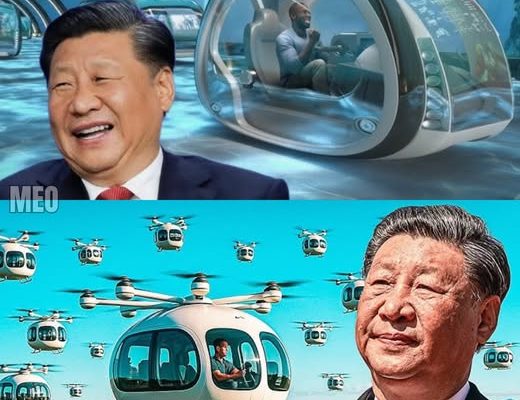At the 2025 Shanghai Expo, China unveiled its latest breakthrough in transportation technology, stunning the global audience and igniting a wave of excitement and controversy. This new generation transport system, hailed as a marvel of innovation, promises to redefine urban mobility, reduce environmental impact, and position China at the forefront of the future transit revolution. However, beneath the awe and admiration lie heated debates about safety, economic implications, and geopolitical influence.

The Innovation: What Makes China’s Transport System Revolutionary?
China’s new transport system showcased at the Expo is a cutting-edge blend of magnetic levitation (maglev), autonomous driving, and ultra-fast connectivity. Capable of reaching speeds exceeding 600 km/h, this system integrates AI-powered traffic management and energy-efficient design, aiming to drastically cut travel times between major urban centers.
Unlike traditional high-speed rail, this new system operates on a network of vacuum-sealed tubes, reducing air resistance and energy consumption. The transport pods are designed for comfort, safety, and rapid boarding, promising to transform daily commutes and long-distance travel alike.
The Expo demonstration featured live rides, virtual reality experiences, and detailed technical presentations that left experts and visitors alike in awe of China’s engineering prowess.

Global Reactions: Awe and Ambition
International observers have largely praised the technological leap, recognizing China’s commitment to sustainable and futuristic infrastructure. Many see this as a bold step toward addressing urban congestion, pollution, and the growing demand for efficient transportation in megacities.
Economists highlight the potential economic benefits, including job creation, stimulation of related industries, and enhanced connectivity that could boost trade and tourism. Environmentalists applaud the system’s low carbon footprint compared to air and road travel.
Controversy and Concerns: Safety, Cost, and Control
Despite the excitement, the announcement has sparked significant controversy. Critics question the safety of operating at such unprecedented speeds in vacuum tubes, warning of catastrophic risks in the event of system failures or natural disasters. Skeptics also raise concerns about the enormous costs involved in building and maintaining such infrastructure, questioning whether it is economically viable or socially equitable.

Geopolitical analysts warn that China’s dominance in this technology could shift global power balances, especially if the country leverages this innovation for strategic influence through infrastructure projects abroad. This raises fears of technological dependency and political leverage over countries adopting Chinese transport systems.
The Debate Over Urban Impact and Accessibility
Urban planners and social activists have voiced concerns about how this transport system might affect existing communities. While it promises to connect cities faster, there are fears it could exacerbate social inequalities if access is limited to wealthier populations or if it leads to displacement due to construction.
Questions also arise about how this new system will integrate with current public transit networks and whether it will genuinely reduce traffic congestion or simply shift it.
China’s Vision: Leading the Future of Mobility

China’s government has framed this project as a national priority, emphasizing innovation, sustainability, and global leadership. The Shanghai Expo presentation underscored the country’s ambition to set new standards in transportation technology and urban development.
This vision aligns with China’s broader goals of achieving carbon neutrality by 2060 and transforming its economy through high-tech industries.
The Global Race: Responding to China’s Challenge
China’s unveiling has intensified the global race to develop next-generation transport technologies. Countries like Japan, Germany, and the United States are reportedly accelerating their own research into maglev, hyperloop, and autonomous transit systems.
This competition could spur rapid advancements but also risks fragmentation of standards and increased geopolitical tensions over technological dominance.
Conclusion: A Bold Leap with Complex Implications

China’s new generation transport system revealed at the Shanghai Expo 2025 is undeniably a technological marvel that could revolutionize how people move and connect. Its promise of speed, efficiency, and sustainability captivates the imagination and offers hope for solving some of the world’s most pressing urban challenges.
Yet, the controversy surrounding safety, economic feasibility, social impact, and geopolitical consequences cannot be ignored. As the world watches China’s ambitious leap forward, the debate continues: Is this the dawn of a new era in transportation, or a risky gamble with far-reaching implications?
Only time will tell if China’s transport revolution will deliver on its promise or become a cautionary tale in the quest for progress. Meanwhile, the world remains stunned—and deeply divided—by this bold vision unveiled in Shanghai.



